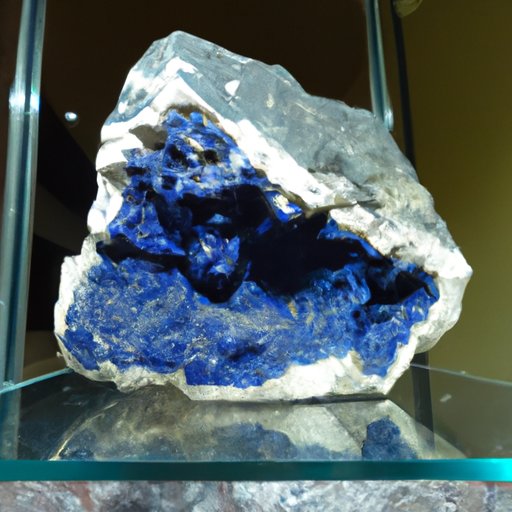Introduction
Minerals are naturally occurring substances found in rocks, soil, and water. They have a wide range of uses in industry and everyday life, from being used as building materials to providing essential nutrients for plants and animals. Understanding how minerals form is an important part of preserving and utilizing this valuable resource.

Geological Processes That Form Minerals
Minerals form through a variety of geological processes, including pressure, temperature, and other factors. Pressure is one of the most important factors in mineral formation. High levels of pressure can cause different elements to bond together, leading to the formation of new minerals. Temperature also plays a role in mineral formation, as certain elements become more reactive at higher temperatures.
In addition to pressure and temperature, other factors such as the availability of oxygen, water, and other elements can influence mineral formation. These elements can react with each other, forming new minerals or altering existing ones.
Most Common Minerals
Some of the most common minerals are quartz, feldspar, mica, olivine, and calcite. Quartz is a hard, crystalline mineral that is often used in jewelry and electronics. Feldspar is a group of minerals composed of silicon and oxygen, and it is commonly found in igneous rocks. Mica is a group of minerals characterized by their layered structure, and it is often used for insulation or electrical components. Olivine is a silicate mineral made up of magnesium and iron, and it is commonly found in basaltic rocks. Calcite is a carbonate mineral composed of calcium and carbon, and it is found in sedimentary rocks.
Each of these minerals is formed through different geological processes. Quartz is formed through the cooling and crystallization of molten magma, while feldspar is created when molten magma reacts with other elements in the Earth’s crust. Mica is formed when water and other elements react with molten magma, and olivine is created when molten magma reacts with sulfur-bearing gases. Calcite is formed when calcium-rich fluids mix with carbon dioxide.

Types of Rocks Containing Minerals
Minerals can be found in a variety of rock types, including igneous, sedimentary, and metamorphic rocks. Igneous rocks are formed when molten magma cools and solidifies, and they contain minerals such as quartz, feldspar, and olivine. Sedimentary rocks are formed when sediments are compressed and cemented together, and they contain minerals such as calcite and mica. Metamorphic rocks are formed when existing rocks are subjected to high pressures and temperatures, and they contain minerals such as quartz, feldspar, and mica.
Methods Used to Identify Minerals
Once minerals are identified, there are several methods used to determine their exact composition. One of the most common methods is to examine their physical properties, such as color, luster, hardness, and crystal shape. Chemical tests can also be used to identify minerals, as different elements will react differently to various reagents. X-ray diffraction is another method used to identify minerals, as it can detect the arrangement of atoms within the crystal structure.

Impact of Mining on Mineral Formation
Mining has a significant impact on mineral formation, as it can change the land surface, pollute water sources, and deplete resources. Mining can cause erosion and sedimentation, which can alter the chemical composition of the soil and water, leading to changes in mineral formation. In addition, mining can introduce pollutants and heavy metals into the environment, which can affect the formation of minerals. Finally, mining can deplete resources, leading to a decrease in available minerals.
Conclusion
Minerals are essential for industry and everyday life, and understanding how they form is key to their preservation. This article explored the geological processes that lead to the formation of minerals, as well as the types of rocks that contain them, methods used to identify them, and the impact of mining on mineral formation. By understanding the complex processes involved in mineral formation, we can work to protect and conserve this valuable resource.
(Note: Is this article not meeting your expectations? Do you have knowledge or insights to share? Unlock new opportunities and expand your reach by joining our authors team. Click Registration to join us and share your expertise with our readers.)
